How to Register Your Website's Domain Name (For Free)
When you register a domain name for your site, you make it a lot easier for people to find you, ensuring that you reap the branding and marketing benefits of having an online presence.

A domain name is the address that visitors type into their browser address bar to arrive at your website. It replaces an IP address: a random, unique string of numbers that specifies where your site’s files are located. While a website domain can be an investment, you can also find one for free, especially if you purchase it with hosting.
Connect a Custom Domain to Your Website Free
In this post, you’ll learn everything you need to know about registering your website’s domain name — either for free or for a low cost.
Why Register a Domain Name?
Domain names have been around since the advent of the web. The first domain name in history was Symbolics.com, which was registered on March 15, 1985. Today, there are more than 300 million domain names, with millions more added each year.
Your domain name is an important part of establishing your brand. No two domain names can be exactly alike, although they can be similar. Ideally, your custom domain name will be unique and distinctive, so users don't confuse it with other domain names or different businesses.
In addition, domain names allow users to easily connect to other computer IP addresses. For example, you can type in an address like "Google.com" instead of Google's numerical IP address of "172.217.13.78." In other words, domain names make our lives a lot easier.
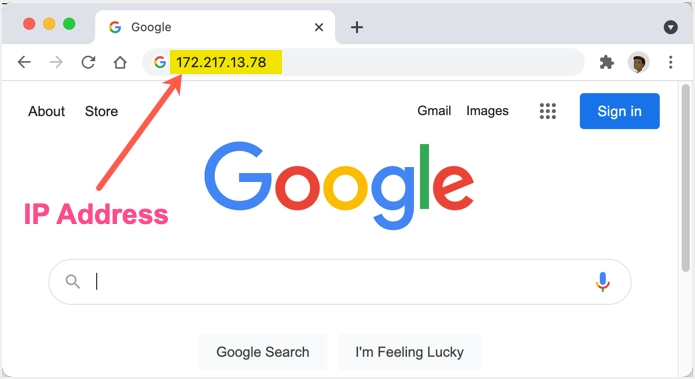
You might be wondering — isn't a domain name, then, simply a website? Although they are similar, domain names and websites have important differences. Your domain name is the address for your website; it is what people use to find your website, which consists of pages, images, and other files.
Choosing a domain name is often the first step when building a website. Read on to learn how to register and buy a domain name.
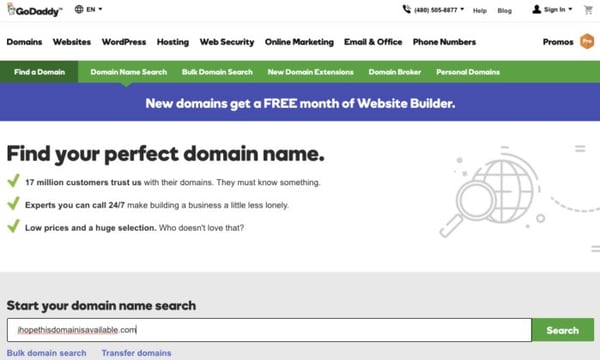
While a website domain can be an investment, you can also find one for free, especially if you purchase it with hosting.
How to Register a Domain Name
- Find a domain name registrar.
- Search for your domain name.
- Finalize your domain name choice.
- Choose a domain name suffix, such as .com or .net.
- Purchase the domain name.
- Add Domain ID protection.
1. Find a domain name registrar.
The non-profit Internet Corporation for Assigned Names and Numbers (ICANN) oversees the entire system of domain names, and it allows outside companies, called domain registrars, to sell and manage domain names. You will need to register your domain name through a registrar.
Some of the most popular domain registrars include GoDaddy, Bluehost, and Domain.com, although there are many more to choose from. Be sure to carefully consider pricing and policies for each one before choosing your domain registrar, as it will be managing your domain name.
2. Search for your domain name's availability.
Once you have found the right domain registrar for you, you'll need to search for your domain name using the registrar's search bar. There are millions of domain names out there, with thousands more added daily.
If you have your heart set on a domain name before doing a search, you might be disappointed to find it is already taken. Keep an open mind and incorporate important keywords into your domain when appropriate.
3. Finalize your domain name choice.
Once you've brainstormed several domain options, consider which ones are available and choose the one that fits your brand best and will also be easy for users to find.
4. Choose a domain name suffix, such as .com or .net.
After settling on the domain name, consider the suffix. The most popular suffix is .com, although .net and .org are also popular. These are considered to be top-level domains, or the highest-level domain suffixes in the domain naming system.
There are also other varieties to consider, such as country code top-level domains. These domain names end in a suffix that is particular to a specific country. A website in Germany might end in .de, for example.
Finally, there is another class of domain name suffixes called "sponsored, top-level domains," which are sponsored by a specific community related to the domain name. For example, .gov is for the U.S. government and .edu is for education organizations.
For most websites, .com is the best suffix for its ease of use, but if you have a specialized website, you might consider a country code or sponsored top-level domain.
5. Purchase the domain name.
When you have settled on the domain name and a suffix, you will pay to register the domain name with the domain registrar. This is not a one-time purchase, however. Typically, you will pay to own the domain name for one year, after which you can renew your registration for a fee. You can expect a registration fee of about $10 to $15.
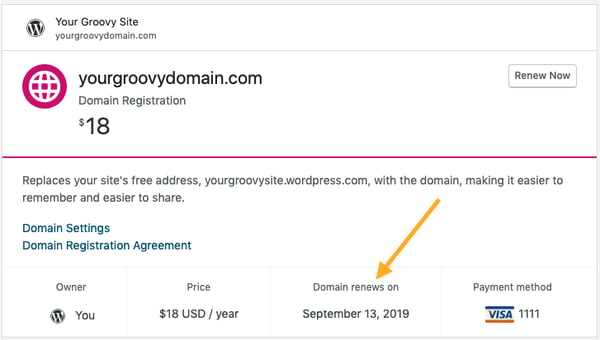
6. Add domain ID protection.
When you register a domain name with ICANN, you must provide your contact information including your name, phone number, physical address, and email address.
As soon as your domain name is registered, this contact information becomes available to the public — unless you pay for domain privacy through your domain registrar. This domain privacy will shield your information from view, keeping your personal information safe from spammers or worse, identity thieves.
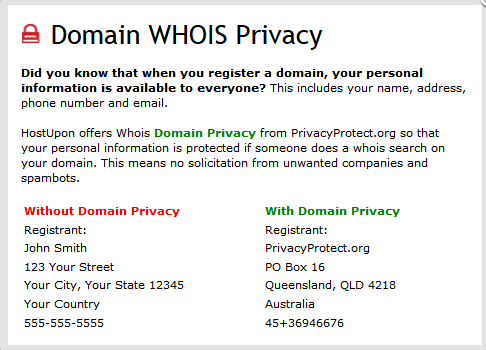
Once you've got the domain name in hand, you're ready to find hosting and build your website. Consider a free CMS, like HubSpot, to design your website, strategize for SEO, and create a blog.
Cost to Register a Domain Name
According to HostGator, domain name cost ranges from free to tens of thousands of dollars, with the average domain name settling around $10-$12 annually. These factors will affect what you'd pay for a specific domain:
- The demand for the particular name you choose (e.g. cars.com sold for $872 million because of how "valuable" that real estate was perceived to be)
- The TLD domain extension (e.g. .com is perceived to be a more valuable TLD than less-used TLDs such as .info.)
- The domain registrar you're purchasing from
- Whether the domain has already been purchased by someone else (and now has it for sale at a much higher price)
- Whether you commit to an annual payment or another payment schedule
- Add-ons such as privacy
Whether you choose a free or paid domain will depend on your budget and your website's purpose. For example, you might need a basic website or something simple and temporary. In that case, a free domain name might be a good option.
However, paid domain names look more professional and are more likely to grow with your brand. You should ultimately decide what will work best for your business and goals.
Pro Tip: You can get free hosting and link your custom domain to your site for free when you build it with HubSpot CMS.
How to Register a Domain Name for Free
Looking for a free domain name? There are several domain registrars, website hosting providers, and website builders offering free domain names, typically with the purchase of another service or with no cost but some customization limitations.
1. Wix

Wix is a popular drag-and-drop website builder that allows you to register a free domain name with the stipulation that it includes Wix's name as well. This means that although you get your domain name for free, it will read yourdomainname.wix.com. This is a trade-off to consider when registering a domain name for free.
Best For
Wix is a great choice for first-time website owners who are looking to start a small personal brand under the Wix subdomain. You can eventually upgrade to a custom domain if you end up enjoying Wix’s platform. We don’t recommend it if you’re planning to blog regularly, as there are better choices out there, such as WordPress.com.
2. Weebly
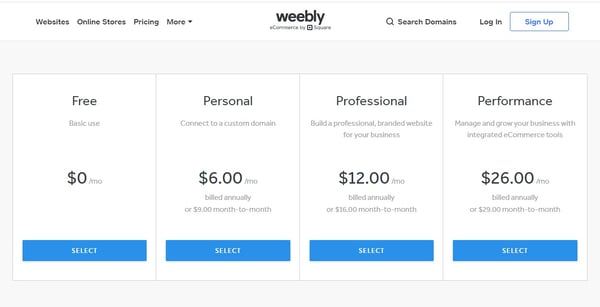
Like Wix, Weebly offers a simple website builder with a free domain name that will appear as yourwebsite.weebly.com. You will have limited access to the site-building features, but you will save annual fees for domain names. This is a great option for temporary or basic websites.
Best For
Weebly is a good choice for those who want to try out building a website for the first time, then use that experience to move to another platform such as CMS Hub. Weebly is also a great fit for owners of small online stores who want to build an ecommerce website for a low cost.
3. Bluehost
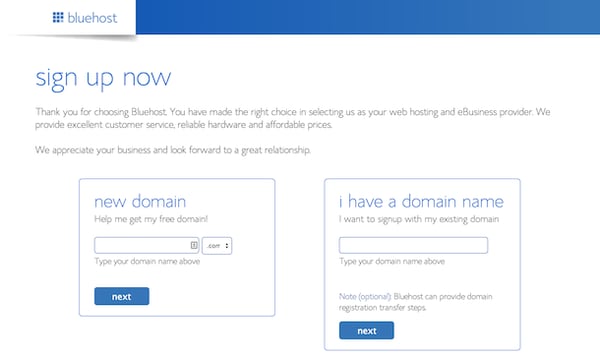
Bluehost is a web hosting provider that will offer you a free domain name for one year with the purchase of its web hosting plan. If you are in the market for both a domain name and a web hosting provider to get your business online, this can help you save money on the first year's expenses by adding the domain name on for free with a purchase you were already planning to make.
Best For
Bluehost is an excellent option for small-to-medium business owners who want to choose a custom domain (not a free subdomain) and choose their own CMS. With Bluehost, you can opt for any CMS platform, including CMS Hub, WordPress (.org, not .com), or even Joomla.
4. WordPress
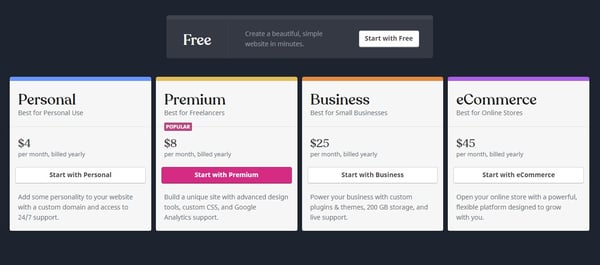
WordPress will also offer a free domain name, although it will appear as yourdomainname.wordpress.com. If you register your domain name here, you can easily build your website with WordPress, too. WordPress is the most widely used content management system, so you'll find it easier to add functionality with plugins and get support when you need it.
Best For
WordPress is a fantastic choice for beginner-to-advanced bloggers who need a tried-and-true content publishing platform to launch their site. The WordPress subdomain is also fairly recognizable and offers a stronger brand than a Wix or Weebly subdomain. While WordPress.com doesn’t offer the same level of customizability as WordPress.org, it still offers a free domain and plenty of personalization options for relatively affordable prices.
5. GoDaddy
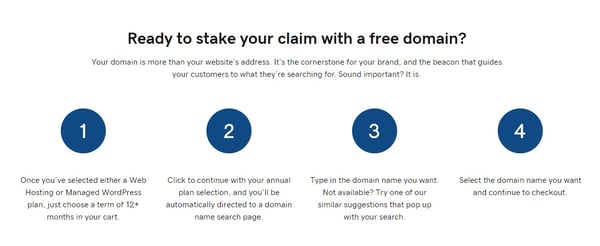
Another web hosting provider, GoDaddy offers free domain names, so long as you purchase one of its hosting plans. GoDaddy is loved for its low rates for hosting plans and its added security tools that scan for and remove malware and backup your website.
Best For
GoDaddy is a great choice for small-to-medium business owners looking for a free domain, hosting plan, and website builder all in one. While you still have the option of connecting your GoDaddy-hosted domain to another content management system, the service offers the convenience of a built-in website builder you can start using for free.
6. Freenom
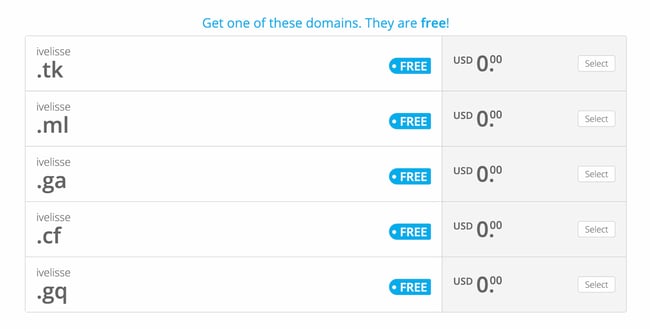
If you’re looking for a free domain name without a hosting plan or a website building platform bundled into the offer, then Freenom is a great choice. It offers five TLDs to choose from: .tk, .ml, .ga, .cf, and .gq. Keep in mind that these are country-code top-level domains (ccTLDs). For instance, the .ga TLD is for the country of Gabon. Check out a full list of ccTLDs here.
Best For
Freenom is a great choice for owners of location-agnostic businesses, and for those who must have a custom domain regardless of the TLD. We would caution to use Freenom with caution only because the unrecognizable TLDs can make your site look less legitimate or secure. Use it only temporarily until you’ve saved funds to buy a domain name from a registrar.
How to Buy a Website Domain
Buying a domain is part of the registering process, but what does that actually entail? And how can you buy one that’s already been registered by someone else? Let’s take a look.
1. Choose a domain name that reflects your brand.
Before you ever take out your wallet to buy a domain name, you must first create a custom domain name that accurately reflects your brand.
Avoid dashes and numbers for the purpose of readability. If your domain name is already taken, you can add a service, product, pronoun, location, or action to the domain, such as “buy” or “shop.” These additions help you create a custom name without straying too far from your brand name. Examples include:
- https://www.mybillie.com/ (Brand name: Billie)
- https://www.weareanimal.co/ (Brand name: Animal)
- https://briogeohair.com/ (Brand name: Briogeo)
- https://shopellasboutiques.com/ (Brand name: Ella’s Boutiques)
- https://www.lovebilly.com/ (Brand name: Billy!)
- https://wearelisten.com/ (Brand name: Listen)
2. Decide on a budget and registration timeframe.
One of the biggest decisions you’ll need to make when buying your domain name is how much to spend up front and how long to keep the domain for.
Decide whether you want to keep this domain for the short or long term. Most registrars will offer monthly, annually, biannual, and triennial commitments. All of these entail a different startup cost to buy your domain.
3. Find your domain name on your chosen domain registrar website.
We’ve already covered choosing your domain registrar. Once you do, look up your chosen domain name to see if it’s already taken. If it is, the domain registrar will present alternatives — either for the domain itself or for the TLD.
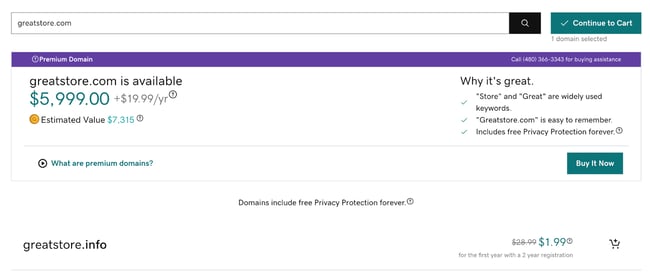
It may offer choices such as .net, .org, and .info. Generally, we recommend sticking with a .com TLD because it’s highly recognizable.
4. Add the domain to your cart and complete the registration process.
If your chosen domain is available, congrats! All you have to do now is add it to your cart and complete the registration process. If you don’t yet have an account with the registrar, you’ll be prompted to sign up.
Be sure to follow the steps we outlined in the “How to Register Your Domain Name” section to ensure you’ve successfully registered your domain name.
5. If the domain is taken, input the URL in your browser and access the website.
What do you do if the domain isn’t available? We have good news. You still have a chance at buying it.
First up, access the URL on your browser. It’s possible it’s a parked domain, which means that someone bought it for the purpose of reselling it. Usually, in these cases, you can easily submit a request for purchase. Here’s one example of a parked domain at greatstore.com:
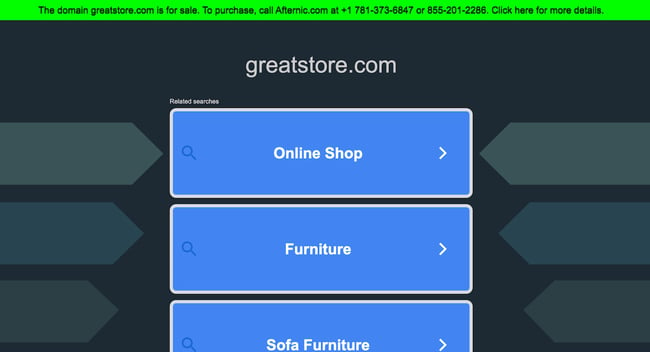
When you click on the top banner, you’ll be taken to a form where you can reach out to a sales team to buy the domain.
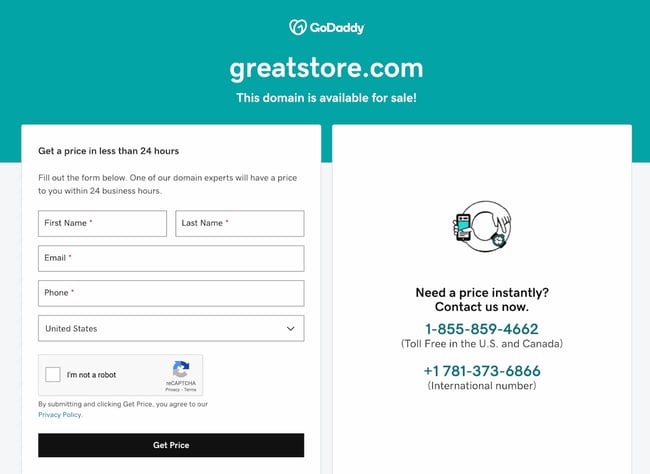
Once there, it may or may not be easy to tell who the domain parking authority is. In this case, it’s GoDaddy. If you head to the GoDaddy website and search for the domain, you can easily find pricing information and then immediately add it to your cart if it’s within your budget.

Complete the domain buying process just as you would for any other domain.
6. If it’s not a parked domain, find the owner’s contact information.
If you find that the domain has a fully built-out site, then it’s not a parked domain. The domain is being used by a real business. Luckily, you still have recourse if you want to buy the domain.
First, determine how likely it is for the owner to sell the domain to you. Does the website look like it’s been recently updated? Is it under construction? How many snapshots does it have on the Wayback Machine? If the website looks outdated or has just a few Wayback Machien snapshots, it’s more likely you’ll successfully start a conversation with the owner.
For example, the domain mellowbee.com looks like a good candidate because it’s had only a few Wayback Machine snapshots over the years and the current website is made up of one page.
The owner’s email is at the bottom, so it’s easy to reach out.
If you can’t find the owner’s contact information on the site, try searching for the owner through ICANN. Keep in mind that a good portion of domain name owners hide their contact information for privacy reasons.
7. Negotiate a price that works for both of you.
When you get in contact, negotiate a fair price. Look up the domain’s history on the Wayback Machine and check out the domain’s Domain Authority (DA) to get a sense of its value. You can use tools such as Moz or Ahrefs to get this number.
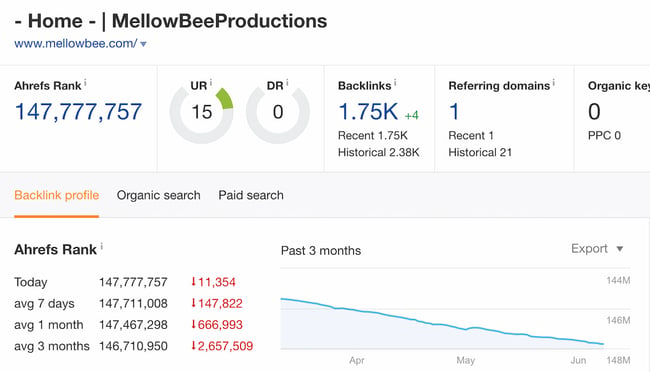
Once you settle on a price, use Escrow to facilitate payment. Do not use your personal PayPal, Venmo, or Zelle account.
8. Transfer the domain to your preferred registrar.
Once you have the domain in hand, it’s time to transfer it to your chosen registrar. You and the owner will need to figure out this process, because it will vary depending on the registrar they used and the registrar you want to transfer the domain to.
9. Renew the domain name.
Whether you purchased the domain through a registrar or purchased it from another person, you will eventually need to renew your domain. When you renew it will depend on the terms of your subscription: whether it’s monthly, annual, biannual, or triennial.
Renewing your domain name is critical to ensure 99% uptime and prevent any user experience hiccups. If you’re afraid of missing the renewal date, don’t fear; most registrars will email you to notify you of the upcoming renewal.
10. Connect your domain to a CMS.
This is an optional step but can help you manage your website with ease. A CMS, or content management system, gives you full mastery over your content. It's easier now more than ever to connect your CMS to your domain name with HubSpot's Custom Domain Connection.
With this tool, you can connect a custom domain, establish your brand, and create a beautiful user-friendly website in minutes.
Build Your Business By Registering Your Domain
After weighing the benefits and drawbacks of free or paid domains, you should get started on your search for the perfect domain name. Domain names can go quickly — and there's a little more competition than Symbolics had in 1985 — so it is important to register the one you want before it is too late.
Registering a domain name is quick and easy, but it does take some time to brainstorm the right name, select the optimal suffix, and find the right domain registrar for you. As such, there's no better time than now to get started on registering your domain name.
Editor's note: This post was originally published in February 2020 and has been updated for comprehensiveness.






0 Comments